EXECUTIVE SUMMARY
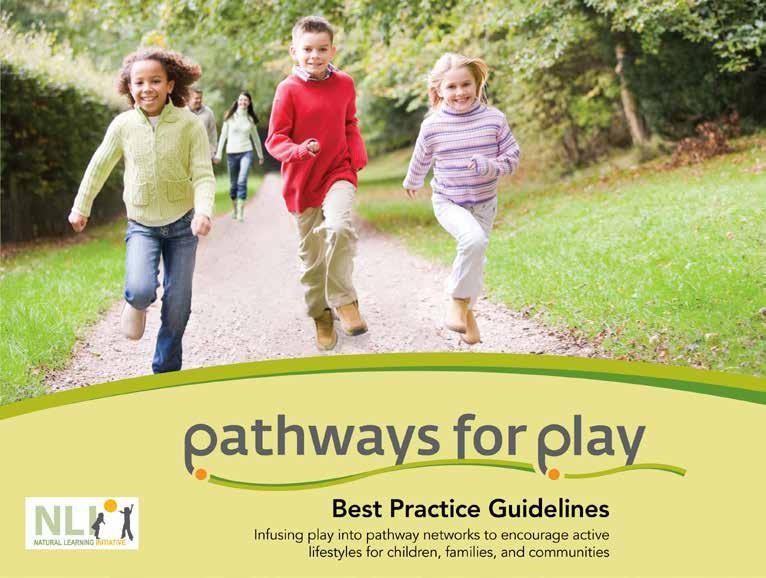
Infusing play into pathway networks to encourage active lifestyles for children, families, and communities
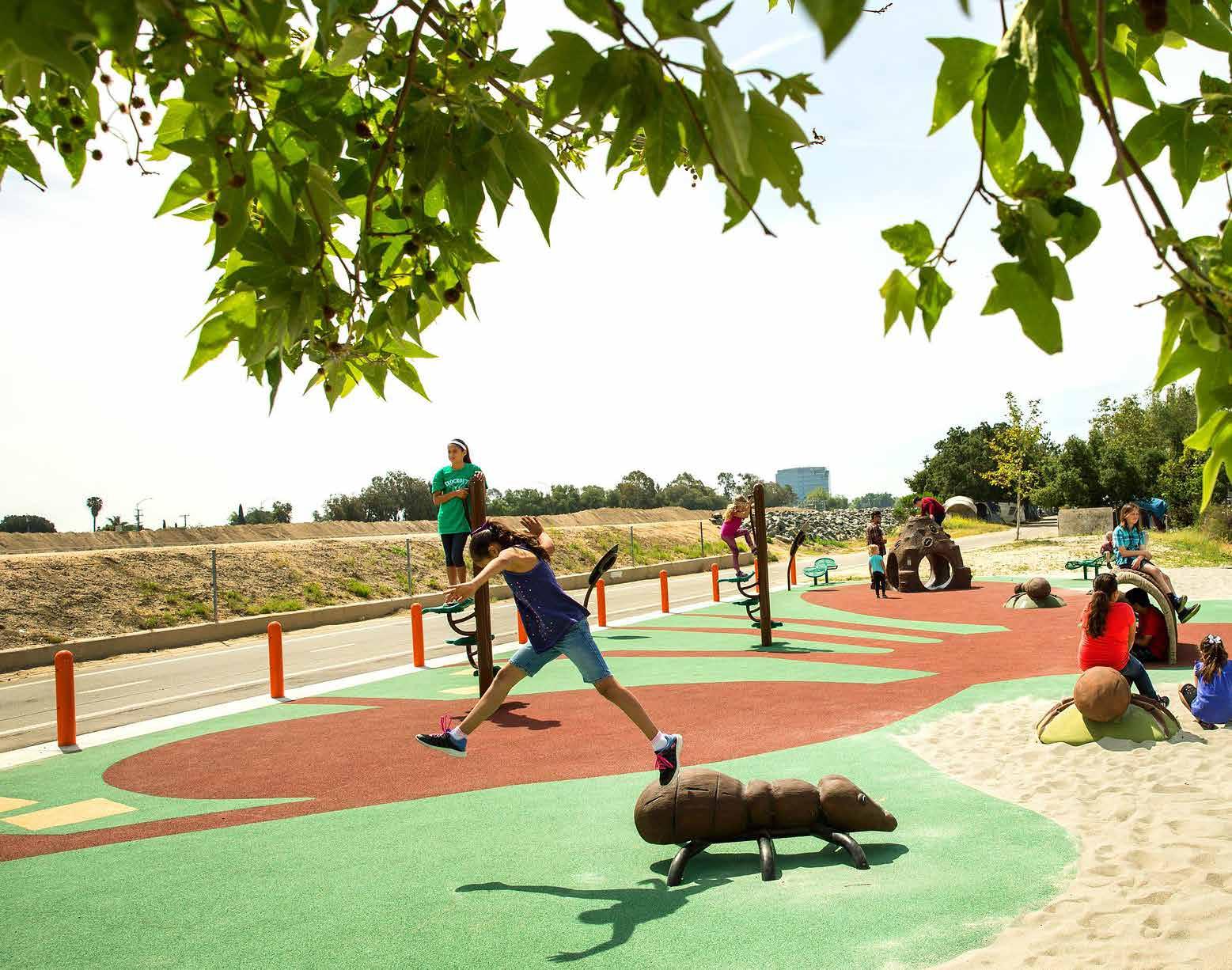
Explore the guide to learn:
Best practice design principles for new and existing systems
Supporting research and benefits
Play pocket considerations for linear play value
Case studies and examples of implementation
Tips for master planning, funding, and sustainability
Additional Resources include:
Professional development training module
The Pathways for Play National Demonstration Site program, national recognition and press exposure for sites that follow the best practice guidelines and establish playful pathways in their communityplaygrounds in their community
The purpose of Pathways for Play is to intentionally integrate play — critical for children’s health — into walkable, bikeable, shared use community pathway networks. Research shows that playful pathways attract children and families and can dramatically increase frequency and duration of use.
PlayCore has partnered with the Natural Learning Initiative, College of Design, NC State University, to help professionals and community champions create opportunities to “bring people to nature” by creating playful routes for families to explore, discover, learn, and be physically active together surrounded by nature. Pathways for Play National Demonstration Sites infuse play into trails, greenways, and shared parks to motivate children, families, and youth organizations to get outdoors and engage in healthy, stimulating activity in nature.
Research & Programming in partnership with:
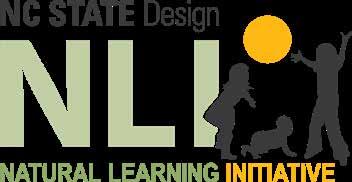
A Unique Playground Initiative to “Bring Nature to People”
Children need access to opportunities to activate, stimulate, and exercise their potential in the rich natural diversity of the outdoors. Today, many children have lost easy access to natural play spaces due to urban sprawl, parental apprehension, perceptions of crime, overscheduled lifestyles, and heavy street traffic. Intentional design strategies to infuse nature back into the everyday play spaces of children can play a critical role in providing children the many developmental benefits of engaging with nature.
Pathways for Play advocates for children, youth, and families as primary user groups and demonstrates technically how this can be done to help increase use by infusing pathways with play value.
Pathways for Play is designed to help professionals and community activists involved in planning and design of trails, greenways, and shared parks to intentionally make these community assets more playful, usable, and attractive to children and families. Playful pathway design will extend playin-nature by creating attractive, playful routes for children to explore, discover, and be physically active outdoors.
Benefits include:

Extending play value
Extending the types of play (especially in the physical and socio-dramatic domain) afforded by a continuous, complex, linear space where nature is omnipresent.

Enabling health promotion
Enabling kids and families to get outdoors, enjoy the fresh air, and experience meaningful physical activity on foot, bicycle, or wheeled toys.

Expanding inclusion
Expanding possibilities for people of all abilities, ages, and backgrounds to engage in playful interactions with each other and their surroundings, which continuously afford play opportunities as children and other users move along.

Engaging with nature
Providing a multitude of opportunities for interacting playfully with a wide diversity of plants and animals through the seasons.

Reinforcing environmental literacy
Benefiting from the learning opportunities afforded by pathways integrated with a “green infrastructure” of stream and river corridors and vegetation patches, transecting local habitats, exposing natural and sociocultural history of former land uses.

Walkable, bikeable community connectivity
Encouraging nonmotorized travel from home to local recreational and cultural destinations, thereby reducing both traffic and the carbon footprint.

Growing community social capital
Bringing residents together through shared lifestyle experiences focused on children and a sense of building healthy communities together.
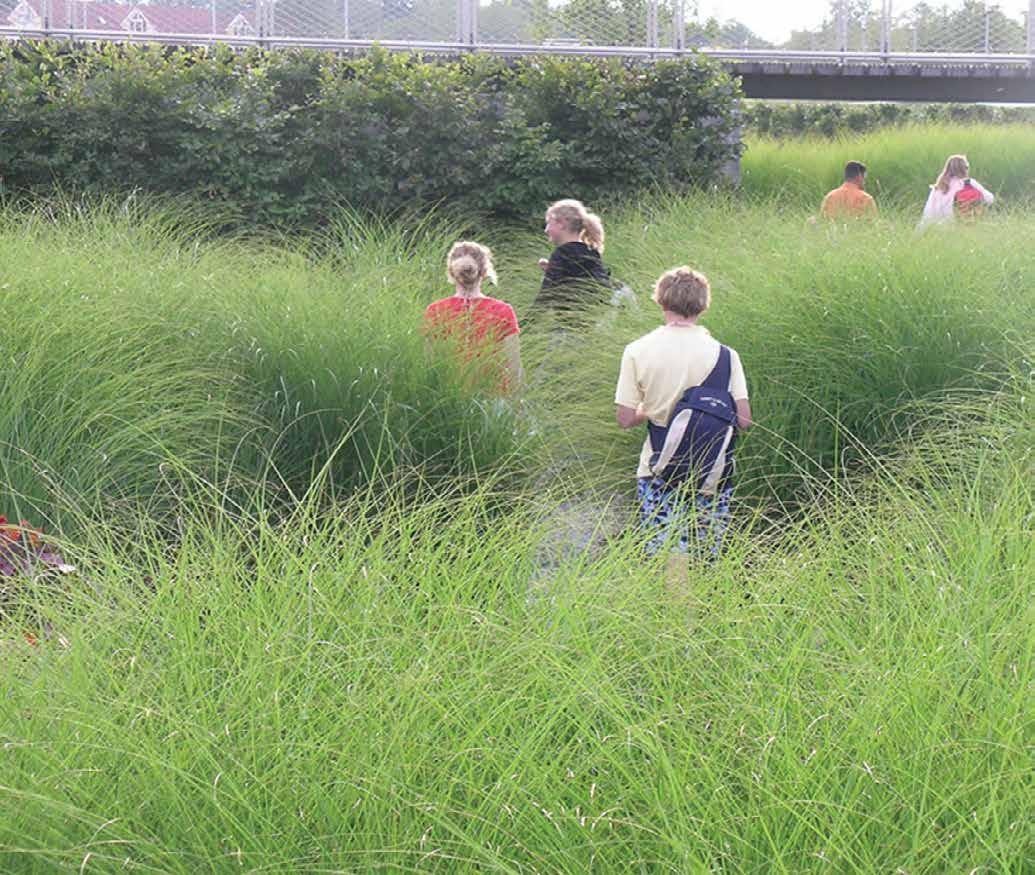
Background
Findings
Research shows that playful pathways attract children and families and can dramatically increase frequency and duration of use of trails, greenways, and shared-use pathways.
Although trails exist throughout our nation, it appears that a small minority of children and families are actually using them. The Natural Learning Initiative, College of Design, NC State University, conducted independent research which provides new insight into how infusing play into pathway networks positively impacts usage, duration, independent mobility, and play behaviors of children.
Methodology
Through an objective analysis of 169 observation points on four playful pathway sites, children were observed participating in gross motor activities, using natural loose parts, interacting with adults and other children, observing, and engaging with nature. Quantitative and qualitative data were collected through a variety of research methods.

Play pockets installed along trails that contained nature themed play equipment, were not only popular, but showed the highest levels of child-adult interactions. The following findings were concluded from the playful pathways in Springfield, MO and Chattanooga, TN.
• Play Value: Playful Pathways present opportunities for diverse play behaviors.
• Benefits: “Family Fun” was the most important benefit of pathways perceived by parents, closely followed by physical activity, engagement with nature, and scenic beauty.
• Frequency: In Springfield, 88% of park users report visiting the park more frequently after the addition of Play Pockets. For Springfield and Chattanooga combined, 75% reported visiting the park more often.
• Duration: In Springfield, 100% of families who visited the park before play pockets were added believe that play pockets increased the duration of family visits. For Springfield and Chattanooga combined, 91% reported increased visit duration.
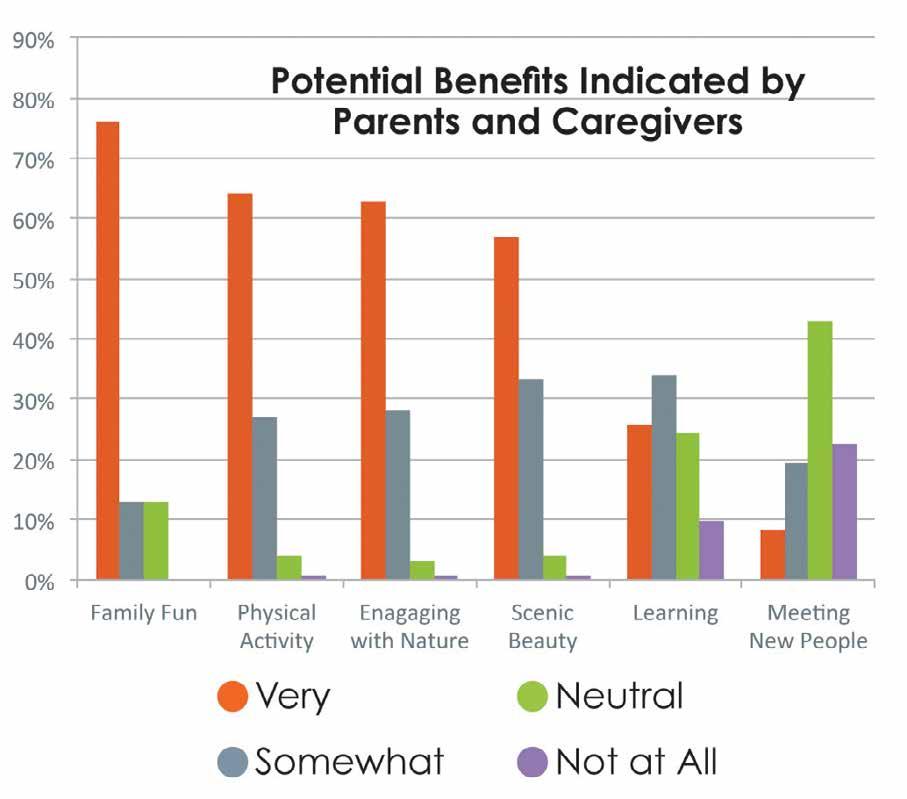
At all four research sites, family fun was perceived as the most important benefit of the pathway experience by
and caregivers.
parents
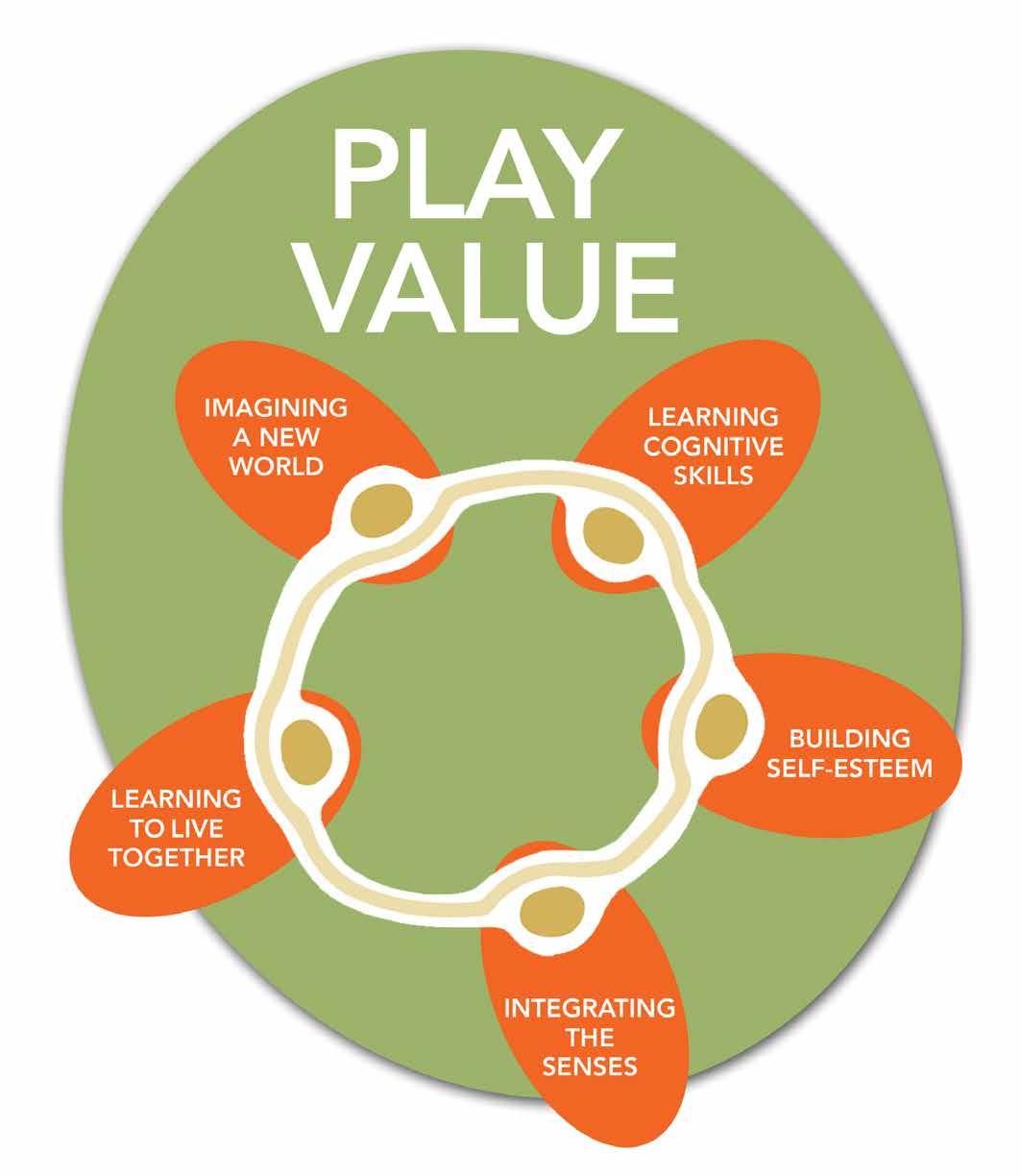
Playing Along the Way
Consider these key factors and design principles when planning playful pathways in your community.
• Connect to meaningful destinations such as playgrounds and parks.
• Stimulate interest through curves, loops, and sinuosity so children “work” to discover the play value along the way.
• Foster an appreciation of community culture and heritage through built features that increase visual interest and encourage a sense of adventure and discovery.
• Utilize natural features such as rock formations, landscape views, or other unique habitats.
• Infuse built features such as manufactured play elements, tunnels, bridges, art, etc., to add visual interest and encourage continuous movement.
Best Practice Design Principles
To motivate children, families, and youth organizations to get outdoors and engage in healthy, stimulating activity in natural surroundings, the Pathways for Play strategy is driven by five best practice design principles:
1 2 3 4 5
Infuse play and learning value into pathways
Create shared-use, inclusive pathways
Connect pathways to meaningful destinations
Locate pathways where children live
Apply appropriate themes for learning
Additional Design Considerations:
FAMILY FUN and adequate visibility can be achieved through careful site layout, equipment selection, and naturalization strategies.
PLAY POCKETS are the primary means for infusing linear PLAY VALUE into pathways by intentionally designing them to stimulate play through a sense of adventure, exploration, and discovery for the whole family in nature.
PHYSICAL ACTIVITY can be achieved through innovative play pockets that engage the whole family while encouraging them to continue moving to explore the next discovery.
LEARNING can be promoted through visible adventure and exploration in nature. Developmental considerations should be addressed through play pocket designs, educational signage, and playful activities.
Playful Pathway Typologies
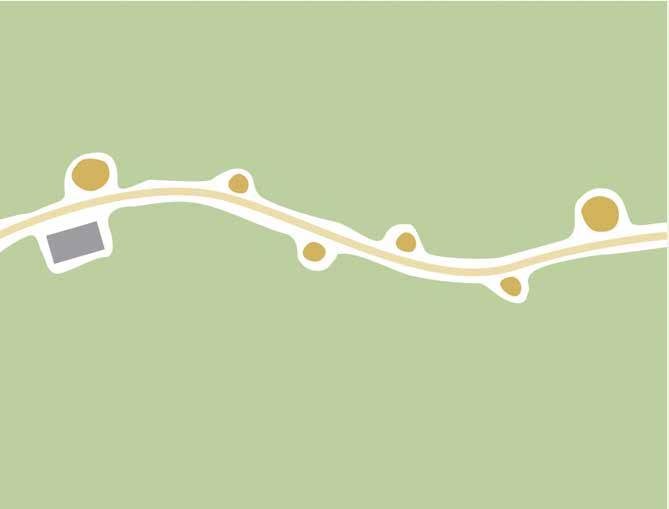
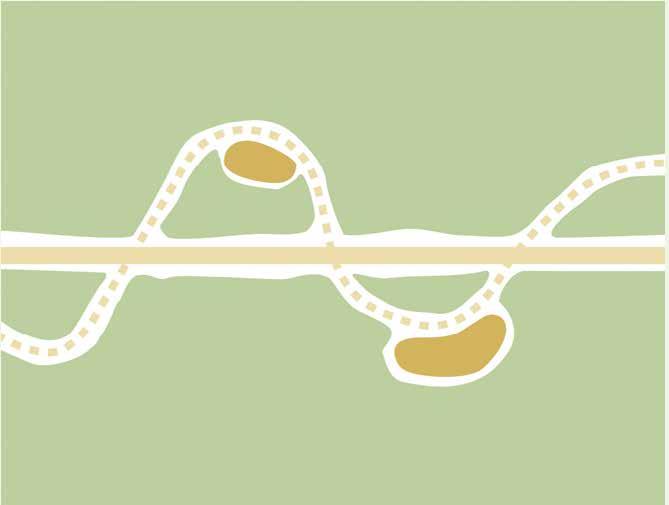
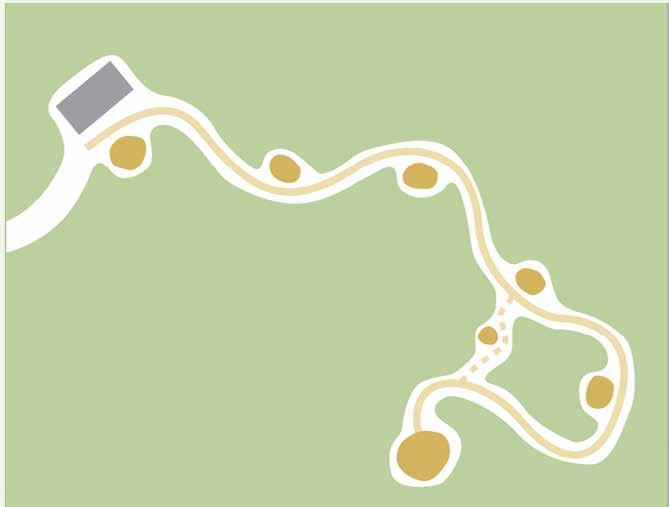

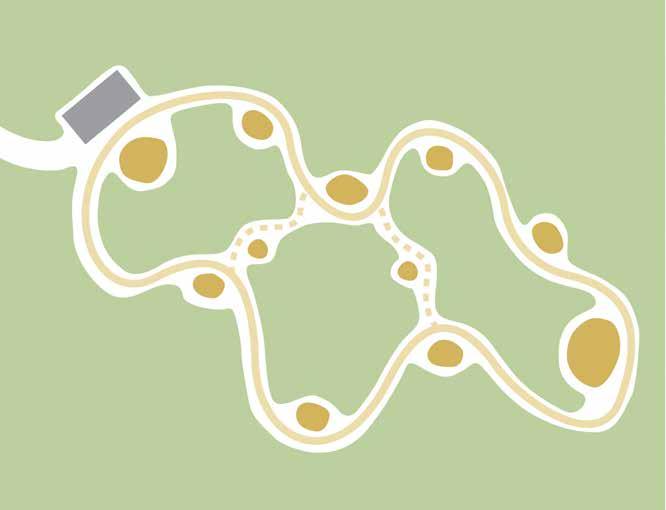


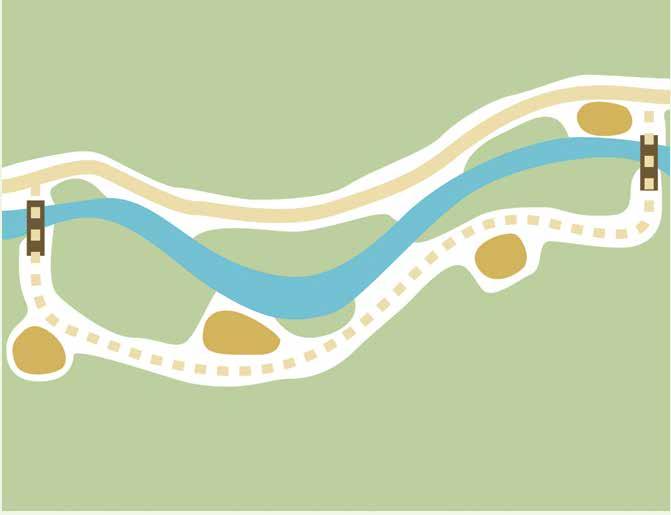
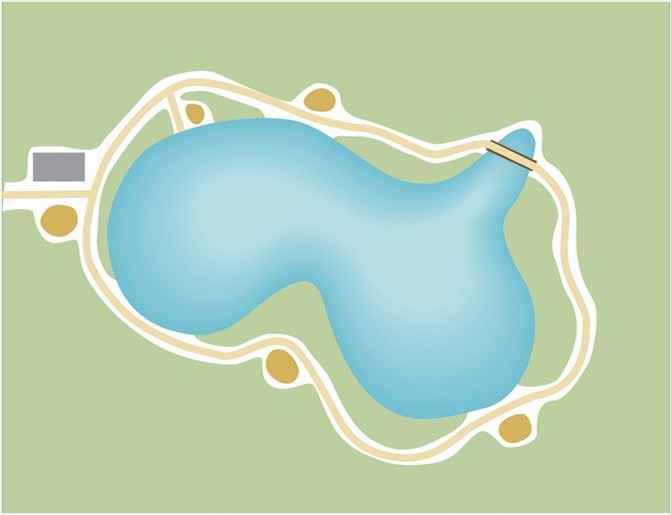

Primary trail
Secondary trail
Textural change in pathway surface
Corridor vegetation
Seating
Low plantings
Play pocket
Water
Parking and bathroom
Sinuous playful pathway
Crisscross loop with rail-to-trail playful pathway
Cul-de-sac playful pathway
Multi-looped playful pathway
Compact looped playful pathway
Flower playful pathway
Single looped playful pathway
Creekside playful pathway
Water body playful pathway
NATIONAL DEMONSTRATION SITE NETWORK

PLAYFUL PATHWAYS
High-quality outdoor play and recreation environments are essential to community health and wellness. Research indicates that when stakeholders are engaged in the planning process, evidence-based design best practices are implemented with the built environment, and supplemental programming is offered to further enhance user experiences, then positive outcomes occur.
Intentionally aligning to National Demonstration Site design criteria ensures that your community can maximize the value of your investment by implementing scholarly best practice research to activate play and recreation destinations. With evidence-based best practices to design and implement high-quality play and recreation environments, National Demonstration Sites receive recognition, demonstrate impact through data services, and sitespecific reports to share and showcase the impact on community health and wellnes benefits.
Pathways for Play Best Practice Implementation:
• Assess form, location, access, usability, safety, and regulations when evaluating an existing or planned pathway.
• Connect pathways to meaningful destinations in locations where children live to support their independent mobility.
• Promote environmental literacy and learning by integrating play pockets along the path. Play pockets include themes for learning, educational signage, and playful activities that enhance the overall play value.
• Integrate at least three play pockets at appropriate distances apart to encourage movement and discovery.
NATIONAL DEMO NSTRATION SITE Adva ncing r ecr eation through r esearch BASED BEST PRACT ICES Building through play JOIN THE NETWORK: PLAYCORE.COM/NDS
NATIONALDEMONSTRATIONSITE
FOR PLAY PRESENTED BY
PATHWAYS

























